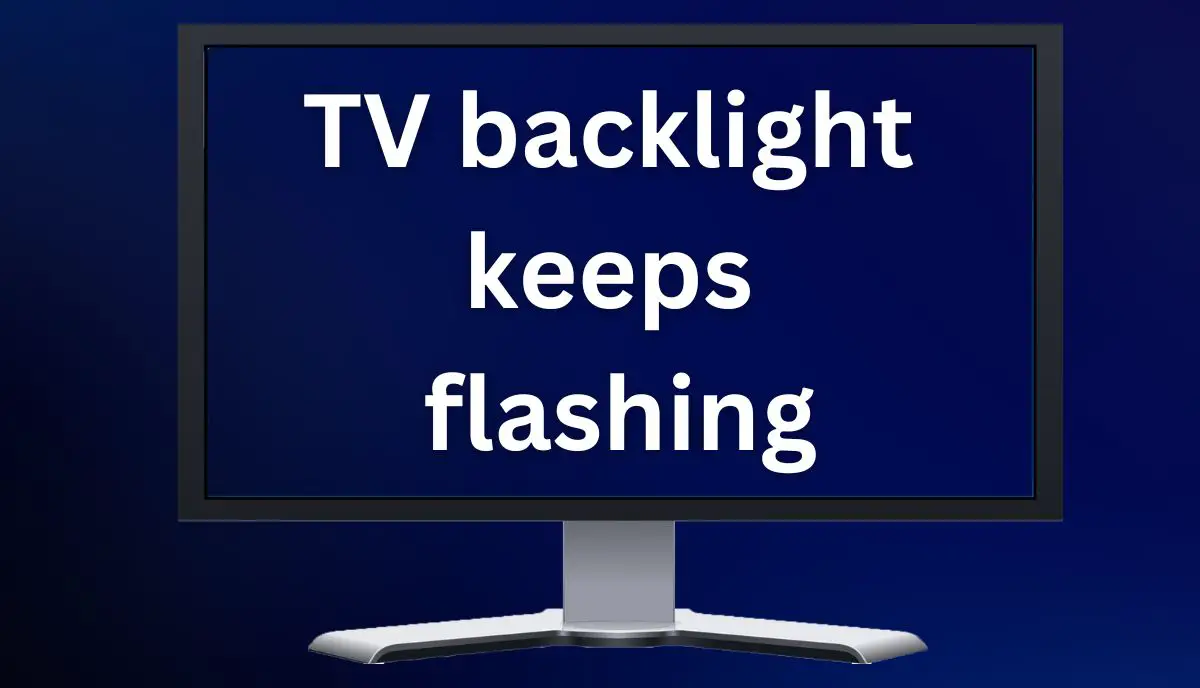People associate defective backlights with dark screens. You can tell that a backlight is bad by shining a light close to the TV. If you see dark images within the screen, the backlights have failed.
But what about backlights that flash instead of going dark? The same factors that cause backlights to fail can also lead to flashing. For instance:
1). Dying Backlights
Laypeople are quick to blame surges and factory errors for dying backlights. However, it should be noted that backlights have limited lifespans. Regardless of how well you treat your TV, the backlights will eventually fail.
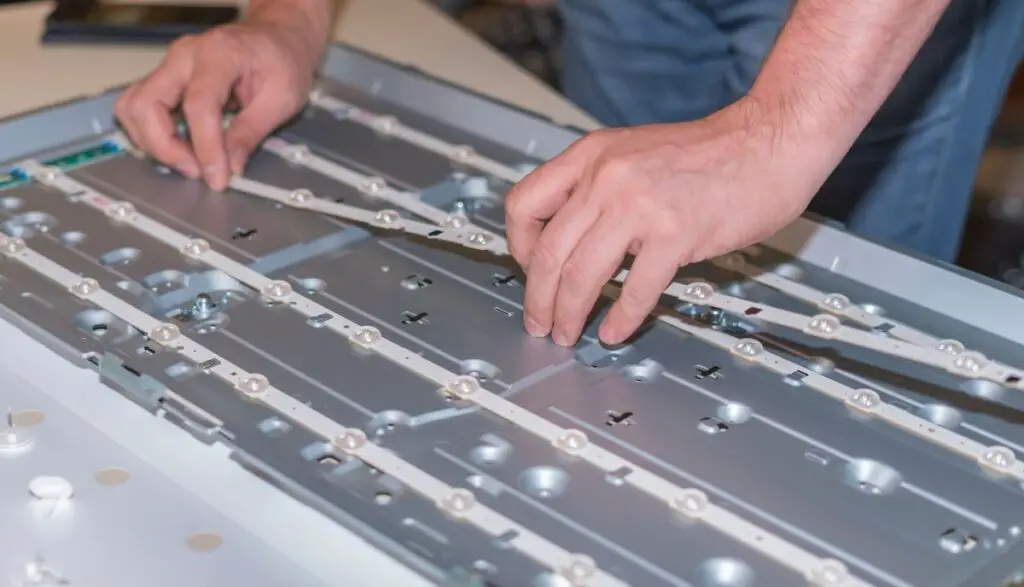
If you’re lucky, they may last 50,000 viewing hours before failing. Some dying backlight strips will stop working altogether. Others will flicker and flash for an extended period before failing permanently.
2). Factory Error
You can’t rule out factory error as a potential culprit, especially if the flickering backlight strips are a recent replacement. You can’t avoid factory errors, regardless of the brand you choose. For instance, the experts at Reliant are convinced that Samsung is the best TV brand in the world.

And yet, this CBS News Miami report highlights an incident from 2012 in which seven million Samsung TVs developed power defects because of a bad capacitor. Therefore, the chances of a backlight strip failing due to factory defects are higher than you realize.
3). Bad Inverter
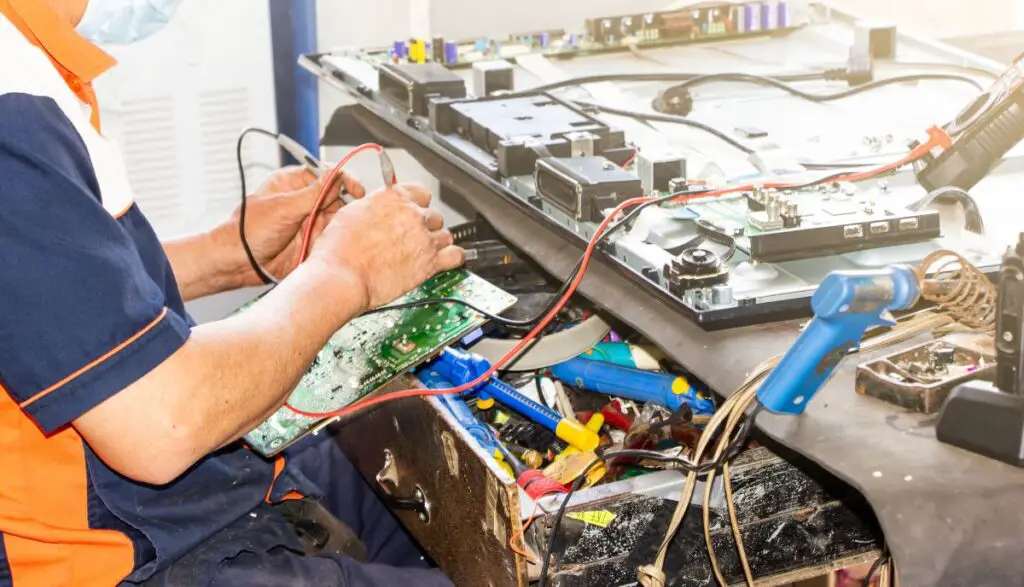
The inverter sends power to the backlights. What happens when the inverter develops a defect? You expect the backlight to stop working, but that would only occur if the inverter’s electrical flow stopped altogether.
A defective inverter can introduce disruptions that interfere with the stability of the electrical flow, leading to flickering and flashing.
4). Poor Installation
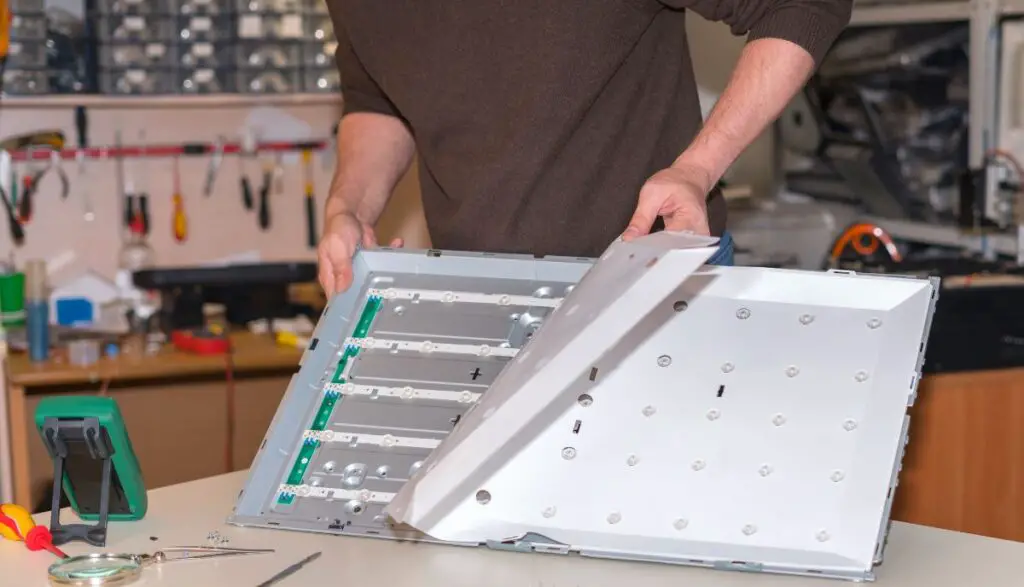
Who replaced your backlights? Did you install the strips yourself? Have you ever seen a bulb with a loose connection to its socket? The bulb tends to flicker. Expect a similar response if you do a poor job of soldering a backlight. You may disrupt the electrical flow, preventing the light strips from receiving sufficient power.
5). Loose Connections
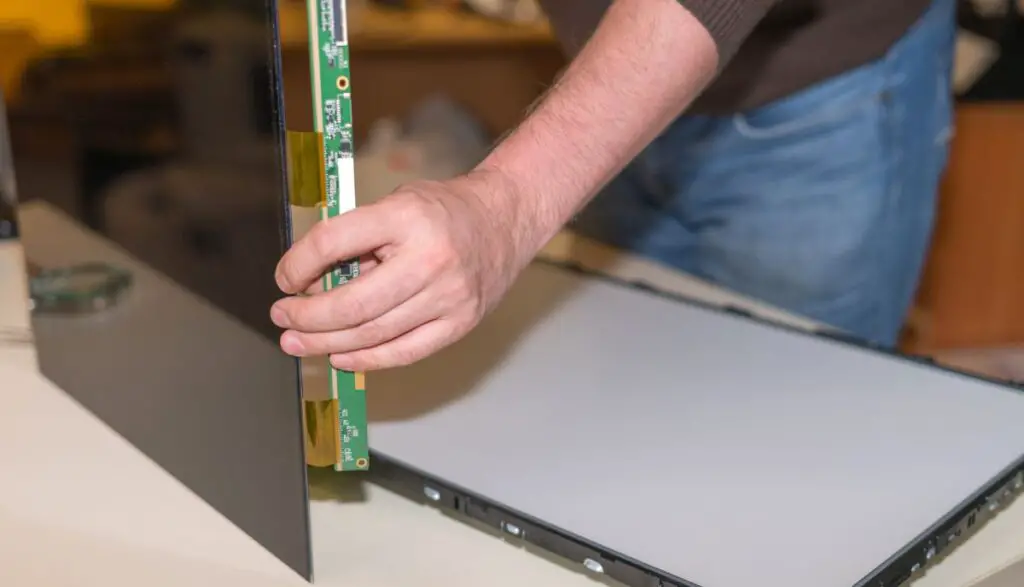
People blame loose connections for everything these days. They are not wrong. Loose connections create instabilities in the flow of power and signals. Have you inspected the connections between the circuit boards, power supply, and the backlight system? Are the cables secure? Do you see frayed insulation and exposed conductors?
6). Software Glitches

Laypeople don’t expect software glitches to affect the backlight. They don’t realize that modern TVs have functions that turn the backlights on and off in response to the images on the screen. For instance, Dynamic Contrast alters the backlights to deliver deeper blacks.
The light sensor feature will also change the intensity of the backlights. If these functions are active in a TV with a software glitch, the backlight LEDs may respond erratically.
7). Defective Mainboard
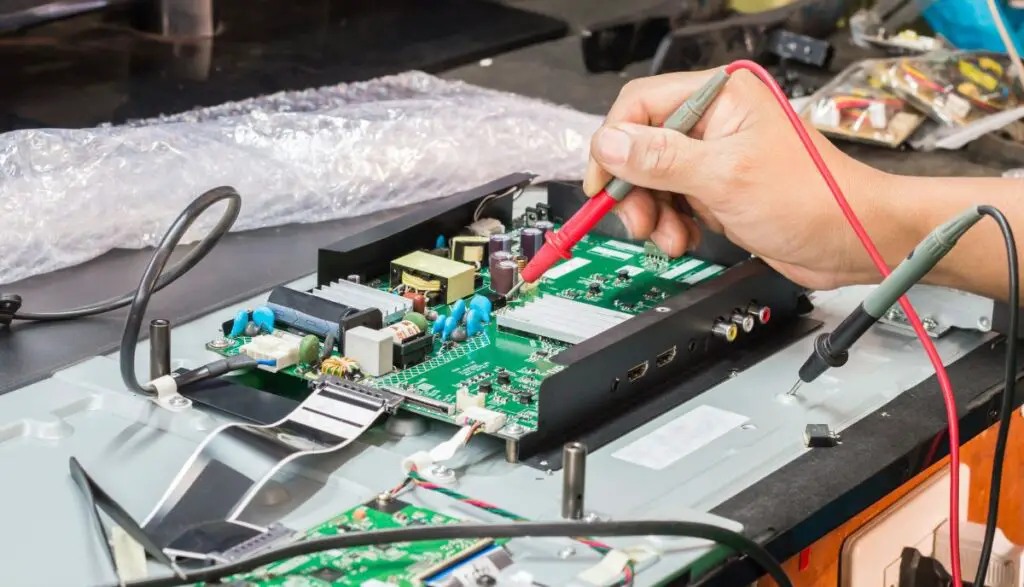
The mainboard runs everything in the TV, including the backlights. It tells the backlight strips to turn on by sending a signal to the power supply. It can also dim them. A defective mainboard can produce erratic responses, such as flashing and flickering, from the backlight strips.
Troubleshooting Guide For A TV With A Constantly Flashing Backlight
- How old is your TV? Modern TVs can last 4 to 7 years. The backlights in a 7-year-old TV with a flashing screen are probably dead or dying. Consider replacing them. This video from Datzfunk shows consumers where to find the backlights and what they look like. It also shows you how to test backlights for defects.
- While the easiest solution is to replace the backlights, they may fail again unless you figure out why they died in the first place. Were they exposed to surges? Did they overheat?
- Have you ruled out the inverter as a potential culprit? I recommend testing the inverter board with a multimeter (DC Mode). The red probe goes to Pin 1, and the black probe to a bare screw. Check the multimer’s readings after turning the LCD screen on. A bad inverter board won’t show anything on the multimeter. The inverter repairs cost you up to $100 – $200. However, I recommend you replacing the component as opposed to fixing it.
- If you have a knack for DIY projects, you can replace your backlight strips without help. Everyone else should hire an expert. If you performed the installation yourself, but the lights keep flashing, ask a technician to check your work. They may notice errors you missed.
- If the technician suspects a factory defect, take the TV or the lights back to the manufacturer. TVs are tricky because you won’t identify the error without opening the TV and testing the strips. But many manufacturers will void your warranty because you opened the TV. This is less of an issue if the strips are the product with the warranty. Return them to the store and ask for a refund or a replacement. The retailer will test them to confirm your claim.
- Remove the back cover and search for loose connections. If you’re lucky, unseating and reseating the various cables will solve the flashing and flickering problem. Otherwise, the situation may compel you to replace frayed cabling.
- Don’t replace the cables without dusting the TV. For all you know, the fault originates from a build-up of dust and debris on the connections and boards.
- Speaking of circuit boards, test them along with the inverter. This video from Frend Techie Vlog shows laypeople how to check the mainboard’s voltage supply. Replace a damaged board.
- Perform firmware updates. Make sure all your apps are up to date. Talk to your technician about potentially rolling back an update, especially if the flashing began after you performed an update.
- Reset the TV after performing an update.
- Replace an old TV.

